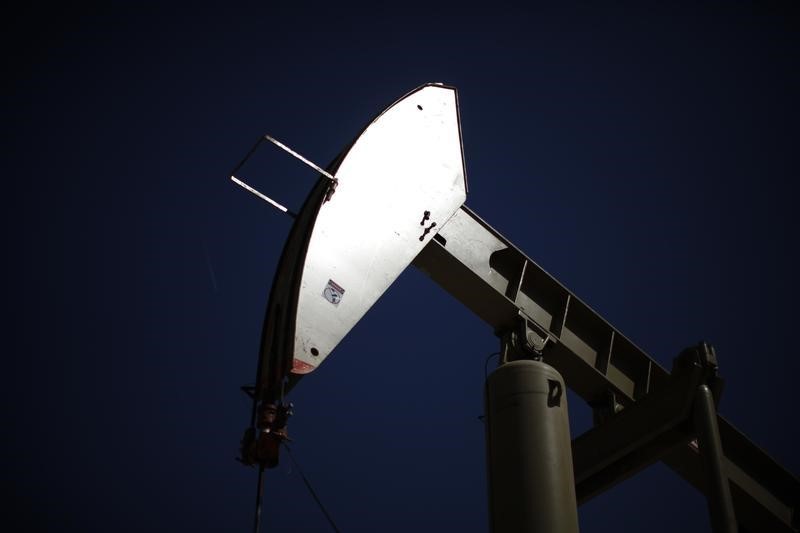By Peter Nurse
Investing.com -- Oil prices climbed Thursday, rebounding after the sharp losses of the previous session amid uncertainty over future supplies and as high-profile peace talks between Ukraine and Russia failed.
By 9:25 AM ET (1425 GMT), U.S. crude futures traded 3.5% higher at $112.45 a barrel, while the Brent contract rose 4.4% to $116.02.
U.S. Gasoline RBOB Futures were up 2.5% at $3.3754 a gallon.
The two benchmark contracts slumped over 12% on Wednesday, the biggest daily drop in percentage terms for about two years in Brent’s case and since November for WTI, after the UAE's ambassador to Washington, Yousef Al Otaiba, stated that Abu Dhabi would encourage OPEC to consider higher output.
The UAE is the third-largest producer in the Organisation of Petroleum Exporting Countries, and one of the very few that has space capacity and thus could lift output quickly without the need for significant investment.
However, this stance was quickly compromised by a tweet from UAE Energy Minister Suhail al-Mazrouei, which stated that his country was committed to OPEC’s policy to slowly ramp up oil supply after the sharp cuts in 2020.
“Clearly, there appear to be mixed messages coming from the UAE regarding its policy towards oil production, which will certainly not help during these volatile times,” said analysts at ING, in a note.
Adding to the reasons for crude prices to rise Thursday was the failure of talks between the foreign ministers of Russia and Ukraine to make any sort of progress towards a ceasefire in the two-week-old conflict.
The meeting, which took place in Turkey, was the highest-level contact between the two sides since Russia invaded Ukraine in late February, but only lasted around 90 minutes.
The crude market had soared to 14-year highs in the wake of the Russian invasion of Ukraine, with the West retaliating by imposing severe sanctions on Moscow, including the U.S. banning the importation of Russian oil.
U.S. crude oil stockpiles fell by 1.9 million barrels last week, according to data from the Energy Information Administration released late Wednesday, while U.S. crude stocks in the Strategic Petroleum Reserve fell to 577.5 million barrels, the lowest since July 2002.
Elsewhere, the European Central Bank speeded up its plans to wind down its extraordinary stimulus, illustrating the worry of its policymakers over the inflationary impact of Russia’s invasion of Ukraine.
U.S. consumer prices surged 0.8% in February, climbing 7.9% on the year, the largest annual increase in 40 years, providing more ammunition for the Federal Reserve to justify an interest rate hike next week.
